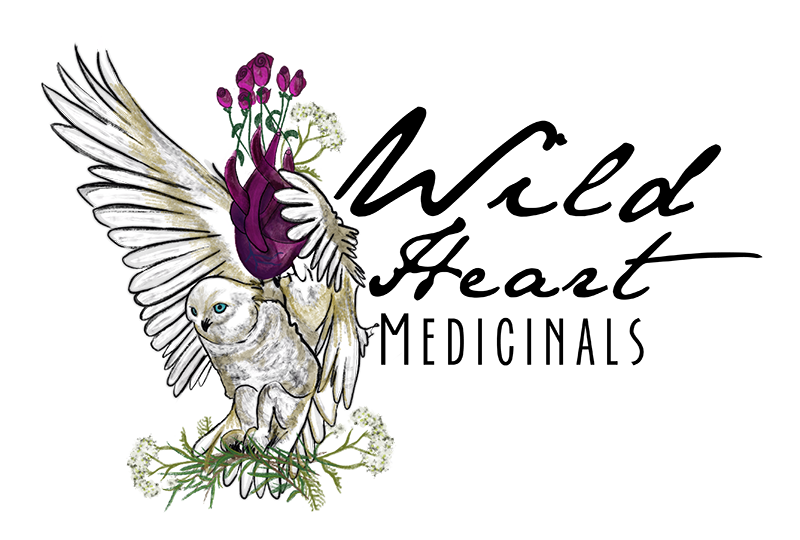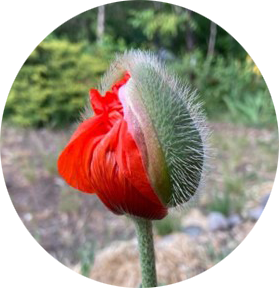It’s mid-summer, dawn. As the day rises, the cooling moonlight is replaced by the crimson glow of warmth, radiant sunshine. It is this time of day that I am reminded that life has invited us back to experience another day. The sunflower knows this rhythm very well; every piece of its being worships the sun. As the sun moves around the sky throughout the day, so too does the sunflower twirl in this natural rhythm, its stalk growing straight up, while the flower head follows the sun’s rotation in the sky.
I find great joy in witnessing the ways in which plants express themselves and even greater joy in becoming friends with them. It is through the reflection of experiencing each plant’s unique expression that we can understand how this expression will interact with our unique physical, mental, and spiritual matrix. Each sunflower seed I planted this year felt like a prayer for joy and tranquility, rippling out inspiration from the heart and truth of creation into all of humanity.
The sunflower, Helianthus annuus, is in the Asteraceae family. There are over 32,000 species in this family. Helianthus annuus originated in the Americas and has spread itself worldwide. It is no wonder humans have fallen in love with sunflowers, reminding us of our inner light and radiance. All parts of the sunflower are edible: leaf, flower petals, stalk, the sunflower head prior to bloom, as well as the seeds that evolve from this head in the fall. For years, I have made sunflower seed butter, offering ¼ of the seeds to the birds and turning the rest of the seeds into smooth protein for my family. This year, as my garden quickly expressed itself in sunflowers at the height of summer, I felt called to ingest her leaves.
I see our bodies as a garden, a diverse climate of microbes and nutrients, elements, and intelligence. When we ingest food, it immediately shifts the environment of our body, and in general, wild plants make the body less hospitable to pathogens. I have found the sunflower to offer our organisms strength, fortitude, light, and cleansing.
The sunflower leaf is an astringent, diuretic, slightly bitter, expectorant, febrifuge, and nutritive tonic. Its bitter properties aid in digestion, and its high percentage of chlorophyll cleanses our blood and infuses us with true light. Diuretics cleanse us and open the channels of elimination within the body, removing that which is not aligned with our highest light and reminding us of what the essence of clarity feels like.
The leaves are packed with nutritional value: vitamin A, B, complex vitamins, vitamin D, and E, and minerals such as copper, magnesium, potassium, phosphorus, and iron.
With this information, I carried on to dry sunflower leaves for tea as well as made sunflower leaf pesto. When drying the leaves, it is best to place them in a cool, dark place with plenty of space apart from one another so as not to allow the moisture in the leaves to ferment one another in the drying process. I hung some from a string, no more than 4 per bundle, and placed others on a drying rack.
To make sunflower leaf pesto, harvest around 25 leaves per batch and blanch them in water. Allow the leaves to simmer for around 10 minutes until the stems are soft enough to dissolve in a food processor. It is important not to over boil the leaves, allowing the sunflower leaf to retain its nutrients. After the leaves are soft, the small bristles are easily palatable for the tongue, and the stems are soft, scoop them from the water into a food processor. I then poured the water from boiling the leaves into a mason jar and let it cool before putting it in the fridge for a refreshing summer tea.
Once the leaves have cooled down enough to be comfortable to the touch, I added the following ingredients:
lemon, garlic, sunflower seeds, sunflower oil, basil or cilantro from the garden, salt, and pepper
You can also add a bit of apple cider vinegar (1-4 tsp.) to aid in preservation. Each batch I made, I did something a little different. For some batches, I used pumpkin seeds; others, I used hemp seeds, and for one batch I even cooked zucchini from the garden and added it to the mixture. Have fun and play with what you like and what is available locally to you. Below is a template for portions of each ingredient. When making things like pesto, I find it easy to play around with portions to taste. The most important thing is that there is enough liquid (oil) to turn the leaves into a smooth consistency.
Ingredients
- 25 sunflower leaves (about 1 ½ cups once blanched)
- ½ cup of your herb of choice—e.g. cilantro, basil, oregano (optional)
- 2 garlic cloves
- ½ to 1 full lemon
- 3 tablespoons of seeds – sunflower seeds, hemp seeds, pumpkin seeds
- ½ cup of sunflower oil
- Pinch of salt and pepper to taste
Directions
- Combine all ingredients in a food processor until it is a consistency of your liking.
- Place in a BPA free container and store in the fridge.
- Enjoy within 10 days of creation.

